Selecteer uw locatie en taal voor de beste website-ervaring

QR codes date back to 1994, when a Japanese corporation, Denso Wave, a subsidiary of Toyota Motors, invented them to track automobile parts throughout the assembly process. In 2020, the COVID-19 pandemic led to a new contactless way of life and paved the way for QR codes to be part of everyone’s daily routine. The most common routine was scanning the QR code at a restaurant and a menu popping up on your phone to prevent the spread of germs. More recently, in 2022, GS1 announced their expectations for the transition of accepting 2D barcodes at POS (point-of-sale) instead of 1D barcodes, referred to as Sunrise 2027. Not only are QR codes at your favorite restaurant, but they are used throughout the supply chain, on packaged food, for marketing campaigns, and even on your personal business card.
Insider Intelligence states that “the number of US smartphone users scanning a QR code will increase to 99.5 million in 2025.” If you aren’t using QR codes to accelerate your labeling, now is the time to start incorporating them to help streamline your business operations.
This blog will help explain what a QR code is, the anatomy of a QR code, and how to make one in TEKLYNX barcode label design software.
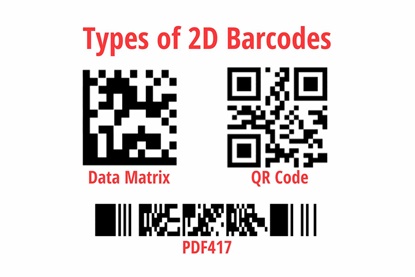
QR code is short for Quick Response Code, which is one of the many barcode symbologies. QR codes consist of an array of black and white squares that typically store URLs and can only be read by smartphone cameras or 2D barcode scanners. Keep in mind the difference between 1D and 2D barcodes; 1D barcodes, also known as linear barcodes, consist of vertical black and white lines, while 2D barcodes consist of two-dimensional rectangles or squares that can go vertical or horizontal and can store more data in a smaller size. QR codes are a type of 2D barcode and can be found on coupons, in restaurants, and at the grocery store.
Now we know what a QR code is, let’s talk about the difference between a static and dynamic QR code, what the black and white squares mean, and how to make a QR code.
There are also a few different data formats QR codes are capable of handling. These consist of numeric (numbers zero to nine), alphanumeric (numbers zero to nine and letters A to Z), byte, and Kanji (non-Latin Japanese script). QR codes can encode up to 7,366 characters of numeric data, much more than the traditional 1D barcode, and can be scanned in any direction while also partially damaged up to 30%. The convenience and speed of scanning QR codes are two of the many reasons they are becoming used in so many industries. To learn about other types of barcodes you can create in TEKLYNX label software, read our barcode symbologies blog.
You may be familiar with the classic QR code as mentioned above, but did you know each black and white square has its own job? The black and white squares hold different information, and once scanned, the unique pattern translates into human-readable data in a few seconds. Let’s break down what each black and white pattern on a QR code does. The colorful QR code below can be used for reference.
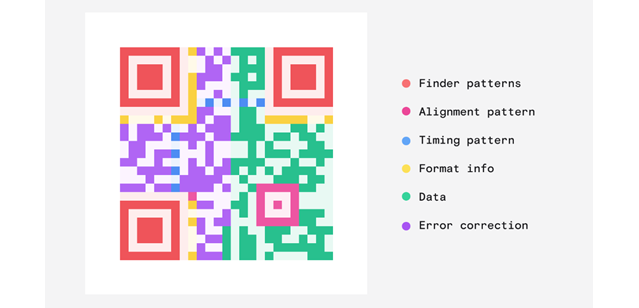
If you want to learn even more about QR codes, check out this article that helps explain the complexity of the data.
QR codes have many benefits, such as the ability to:
You typically see QR codes at your favorite restaurant or on packaged food, but they are also used for:
There are many use cases for QR codes, however there are also instances where a QR code may not be the best option for your business. Billboards, the backs of work vans or trucks, and a short TV commercial are not user-friendly locations for QR codes because they are not safe or easy to scan. Chat with a TEKLYNX labeling expert if you would like to know how QR codes can fit into your labeling process.
Looking for a way to create QR codes? Let’s talk about the limitations in free QR code generators and the benefits of using label design software instead. Although there are unlimited free barcode generators online, and they might be cheap and easy to use, there are restrictions that can halt your operations.
Startups and small businesses usually begin with free online generators since they are so convenient. However, once you start generating the codes you may find yourself at a dead end, some limitations of free barcode generators are:
An easy fix to these restrictions is barcode label design software. It is the most reliable and accurate tool to use when it comes to generating QR codes.
Barcode labeling software gives you the ability to leverage more features than a free online barcode generator would. TEKLYNX barcode label design software has over 100 barcode symbologies, wizards to help you create barcodes, and encoded data such as numeric, alphanumeric, binary, and Kanji encoding for QR codes. It’s a full solution where you can create your QR code and your label all in one program. With TEKLYNX label design products, you can also connect to variable data so you can utilize one label template for all your products.
Investing in barcode label design software creates efficiency and accuracy, while helping to reduce errors throughout your entire barcode labeling process. If you want to learn more about barcode label design software, download a free 30-day trial of CODESOFT.
Below are six easy steps to create a QR code in CODESOFT barcode label design software from TEKLYNX. If you have any other questions, contact our customer support team, who work to help our customers barcode better.
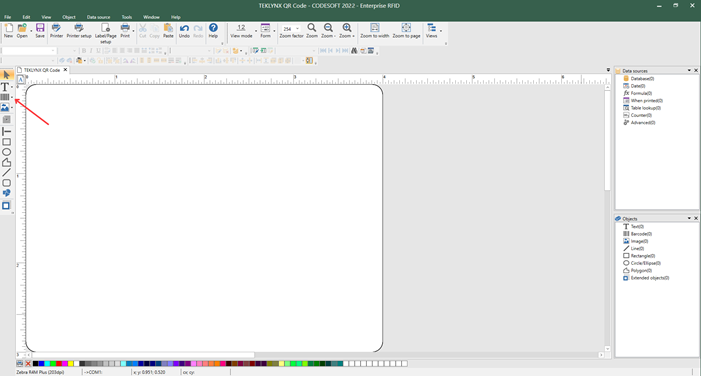
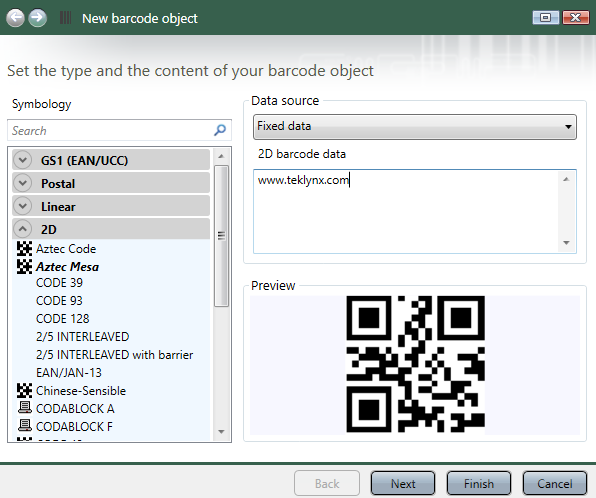
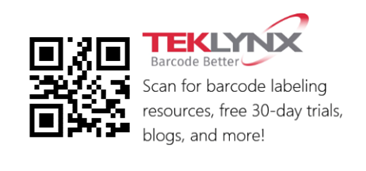
Help increase visibility throughout your supply chain and encourage touchless interactions using QR codes created in barcode label design software. Not only do QR codes hold more information than a standard 1D barcode, but once scanned the information stored within them can be accessed immediately. There is greater accessibility for consumers with QR codes because all you need is a smartphone for scanning. With QR codes becoming more popular, look at improving your labeling and tracking capabilities by incorporating QR codes into your labeling environment. If you want to learn more about how to do so, get in touch with a labeling expert at TEKLYNX today.
Nick Recht is the Sales Manager for the Americas region at TEKLYNX RFID and barcode label solution provider. He leverages his passion for using technology to add value to businesses and his 15 years of AIDC experience to help organizations of all sizes barcode better. When he is not working, he is driving one of his daughters to a practice of some sort or doing a project around the house.
Merriam Webster says a barcode is “a code consisting of a group of printed and variously patterned bars and spaces and sometimes numerals that is designed to be scanned and read into computer memory and that contains information about the object it labels.” While it’s great to know the technical definition of the word, what does that mean for you and your business?
READ MORE
Barcode symbologies differ by the type of data they hold and are encoded with. In this blog, we go over the categories of barcodes, the most common types of barcodes, and how to choose the best one for your labels.
READ MORE
Jenna Wagner, Director of Marketing at TEKLYNX, sat down with James Urquhart, Director of Partnerships for GS1 US, to gain his perspective and insights on this movement. Read further to learn what he had to say on what the future may hold for 1D versus 2D barcodes.
READ MORE© Copyright 2025 TEKLYNX CORPORATION SAS. Alle rechten voorbehouden.
What do you think? Leave us a comment.
Comments will be reviewed and are subject to TEKLYNX’ comment policy. Your email address will not be published publicly.